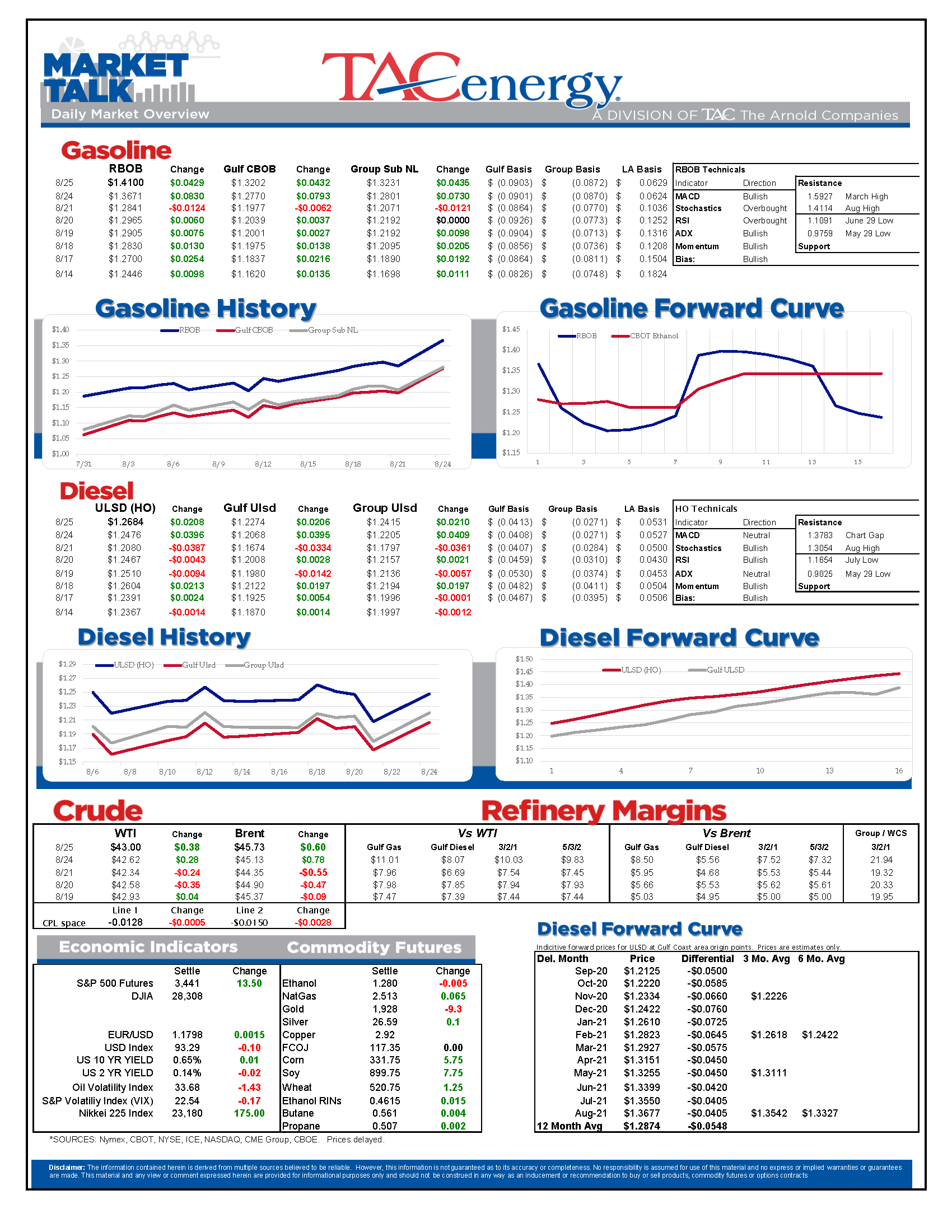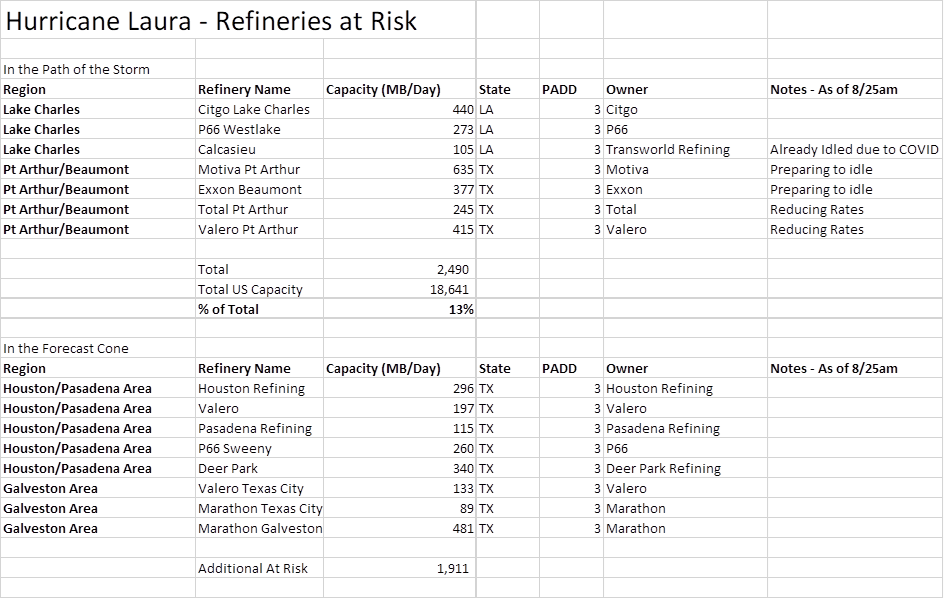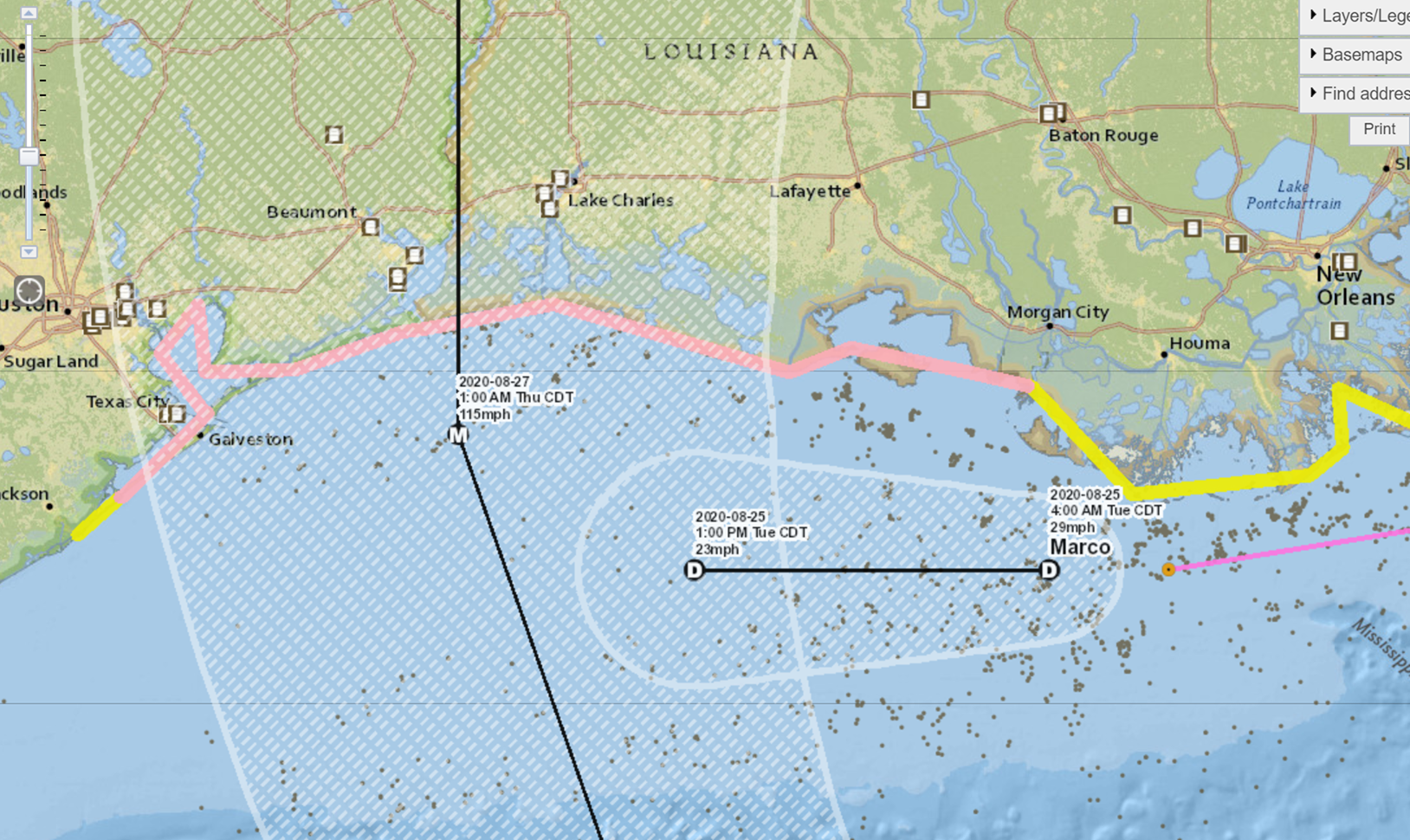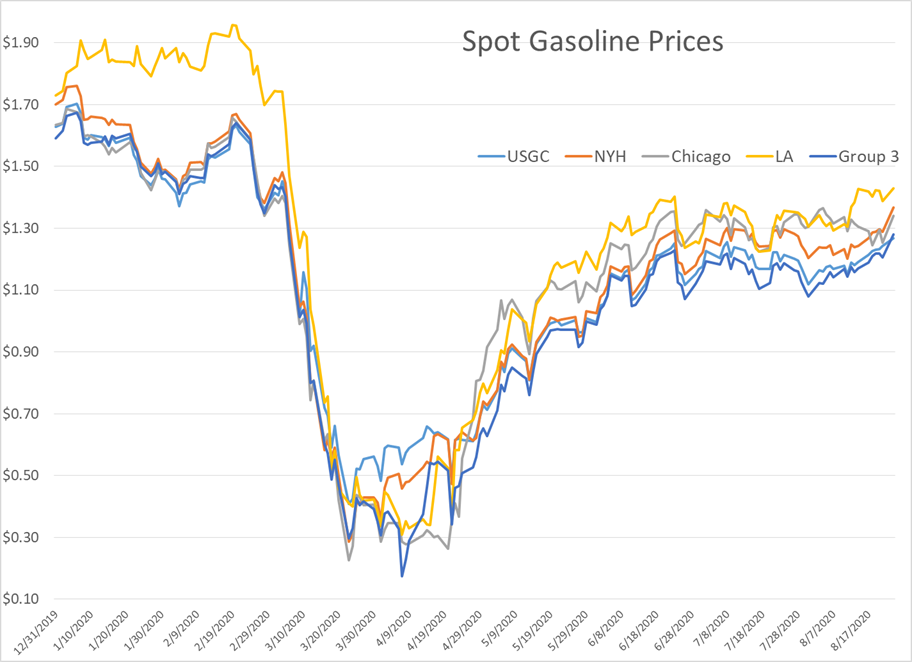Hurricane Laura Threatens U.S. Refineries

Gasoline prices are approaching six-month-highs as Hurricane Laura poses the biggest threat to U.S. refineries since Hurricane Harvey three years ago. Oil and diesel prices are moving higher as well, but are not keeping pace with gasoline – which is often the case in storm situations – and seem somewhat dubious about the long term impact this storm may have on an oversupplied market.
The Nasdaq and S&P 500 reached new record highs as trade and virus optimism kept the trend lines pointing higher, while the DJIA is undergoing a major overhaul. In the latest sign of the COVID market fallout, ExxonMobil is being removed from the DJIA, while Salesforce (dot com) will now be included.
While Marco fizzled out and spared Louisiana, Laura was upgraded to a Hurricane this morning, and 13 percent of the country’s refining capacity is in the direct path of the storm based on the latest models. The current forecasts have the storm coming on shore Thursday morning, as a category 3 “major” hurricane, just east of Port Arthur, TX. Plants in the Port Arthur/Beaumont hub have announced that they are reducing rates and/or idling units until the storm passes. The path of the storm could actually be just as troublesome, if not more, for plants around Lake Charles, LA, as they are on the more dangerous side of the storm, and could get a worse surge/flooding than the plants closer but on the west side. There is still a wide cone of uncertainty with this storm’s path, and even the Houston-area plants could still be impacted if the storm shifts further west.
Those plants that can continue operating are suddenly seeing their best margins in five months, a much needed relief for plants struggling to stay afloat financially. The economic hardship of refineries is one reason Laura’s impacts may not be as widespread as we might normally expect, since there’s at least one million barrels/day of capacity already idled due to weak demand, which should allow for some plants to increase rates and help offset the losses from others. In addition, many Gulf Coast refineries now rely on exports for nearly 20 percent of their production, so they will need to bring more product inland until ports can reopen.
That said, if the major pipelines in the region have to close due to power or flooding issues, then the potential for supply issues becomes more widespread in short order.
If Laura does make a significant impact, don’t be surprised to see states and the EPA ease RVP restrictions on gasoline, since we’re just weeks away from the annual transition anyway and pollution levels have already been at their lowest level in decades thanks to reduced consumption this year. You may notice that several spot markets aren’t keeping pace with the September futures contract this week, as they’ve already begun their fall transition to less-stringent gasoline specs.
Click here to download a PDF of today's TACenergy Market Talk.
News & Views
View All
Energy Futures Are Caught Up In Headline Tug-O-War This Morning
Energy futures are caught up in headline tug-o-war this morning with Canadian oil production concerns and a positive US GDP report trying to push prices higher while sinking Chinese demand worries and Gaza ceasefire hopes are applying downward pressure. The latter two seem to be favored more so far this morning with WTI and Brent crude oil futures down ~45 cents per barrel, while gasoline and diesel prices are down about half a cent and two cents, respectively.
No news is good news? Chicago gasoline prices dropped nearly 30 cents yesterday, despite there not being any update on Exxon’s Joliet refinery after further damage was discovered Wednesday. Its tough to say if traders have realized the supply situation isn’t as bad as originally thought or if this historically volatile market is just being itself (aka ‘Chicago being Chicago’).
The rain isn’t letting up along the Texas Gulf Coast today and is forecasted to carry on through the weekend. While much of the greater Houston area is under flood watch, only two refineries are within the (more serious) flood warning area: Marathon’s Galveston Bay and Valero’s Texas City refineries. However, notification that more work is needed at Phillip’s 66 Borger refinery (up in the panhandle) is the only filing we’ve seen come through the TECQ, so far.
Premiums over the tariff on Colonial’s Line 1 (aka linespace value) returned to zero yesterday, and actually traded in the negatives, after its extended run of positive values atypical of this time of year. Line 1’s counterpart, Line 2, which carries distillates from Houston to Greensboro NC, has traded at a discount so far this year, due to the healthy, if not over-, supply of diesel along the eastern seaboard.
Click here to download a PDF of today's TACenergy Market Talk.

WTI And Brent Crude Oil Futures Are Trading ~$1.50 Per Barrel Lower In Pre-Market Trading
The across-the-board drawdown in national energy stockpiles, as reported by the Department of Energy yesterday, stoked bullish sentiment Wednesday and prompt month gasoline, diesel, and crude oil futures published gains on the day. Those gains are being given back this morning.
The surprise rate cut by the People’s Bank of China is being blamed for the selling we are seeing in energy markets this morning. While the interest rate drop in both short- and medium-term loans won’t likely affect energy prices outright, the concern lies in the overall economic health of the world’s second largest economy and crude oil consumer. Prompt month WTI and Brent crude oil futures are trading ~$1.50 per barrel lower in pre-market trading, gasoline and diesel are following suit, shaving off .0400-.0450 per gallon.
Chicagoland RBOB has maintained its 60-cent premium over New York prices through this morning and shows no sign of coming down any time soon. Quite the opposite in fact: the storm damage, which knocked Exxon Mobil’s Joliet refinery offline on 7/15, seems to be more extensive than initially thought, potentially extending the repair time and pushing back the expected return date.
There are three main refineries that feed the Chicago market, the impact from one of them shutting down abruptly can be seen in the charts derived from aforementioned data published by the DOE. Refinery throughput in PADD 2 dropped 183,000 barrels per day, driving gasoline stockpiles in the area down to a new 5-year seasonal low.
While it seems all is quiet on the Atlantic front (for now), America’s Refineryland is forecasted to receive non-stop rain and thunderstorms for the next four days. While it may not be as dramatic as a hurricane, flooding and power outages can shut down refineries, and cities for that matter, all the same, as we learned from Beryl.






